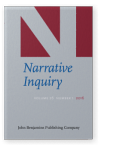Vol. 26:1 (2016) ► pp.108–129
Narrative, trauma, and self-interpretation
Using Ricœur’s Petite éthique to understand the moral experience of bereaved fathers
Although past research has explored the experience of bereaved fathers, few attempts have been made to situate this experience within a pre-existing theoretical framework. This article demonstrates how the narrative moral framework of the philosopher Paul Ricœur, known as his “Petite éthique” can help illuminate some of the features within this experience that contribute to the high rates of mortality and morbidity among these men. To demonstrate its utility, this framework is explored through a secondary analysis of data collected in an earlier phenomenological study that explored the moral experience of bereaved fathers. By clarifying some of the nuance and complexity of the experience of bereaved fathers, Ricœur’s “Petite éthique” framework has implications for health-care professionals, bereaved families, and bereaved fathers themselves.
